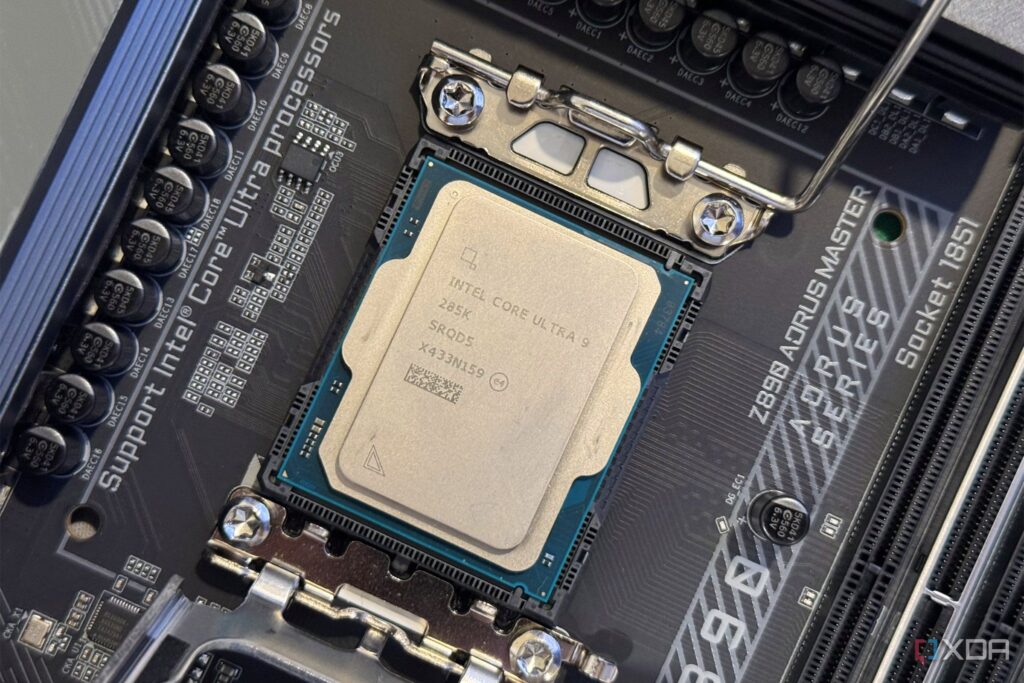
BREAKING: Integrated graphics are surging in popularity as consumers discover they can deliver impressive gaming performance, challenging the necessity of dedicated GPUs. Recent advancements by Intel and AMD have pushed integrated graphics to new heights, making them a compelling choice for budget-conscious gamers.
Just announced by tech analysts, modern integrated graphics units (iGPUs) can now handle many popular titles like Valorant, Fortnite, and Apex Legends at 1080p resolution with frame rates reaching 60 FPS or higher. This shift indicates that dedicated graphics cards may soon become unnecessary for average users.
The implications are significant: with the cost of entry-level dedicated GPUs like the RTX 5050 hovering around $250-300, many are questioning if those funds could be better allocated elsewhere, such as enhancing CPU cooling or boosting RAM capacity.
Why Integrated Graphics are Winning
The performance of modern APUs, particularly the Ryzen 7 8700G, shows that you don’t need a dedicated GPU for enjoyable gaming experiences. These chips are designed to run demanding games efficiently, and even some AAA titles can perform well with adjusted settings. The combination of affordability and capability is driving a trend toward integrated graphics.
Additionally, the efficiency of systems relying solely on integrated graphics is noteworthy. For instance, a PC powered by a Ryzen 7 8700G typically pulls around 120 watts during gaming, while similar setups with dedicated GPUs can exceed 250 watts. This efficiency translates to lower power consumption and reduced heat output, resulting in quieter systems that won’t sound like jet engines when gaming.
“Integrated graphics are no longer just a fallback option; they’re becoming a practical solution for everyday gaming needs,” said a leading tech analyst. “This evolution is reshaping the way consumers think about PC building.”
The Practical Benefits of iGPUs
Beyond cost and efficiency, integrated graphics simplify PC builds. Eliminating a bulky GPU reduces heat generation and power draw, leading to a cleaner, more manageable setup. This can be particularly beneficial for first-time builders who might find managing cable clutter and heat dissipation challenging.
With fewer components to worry about, users can enjoy a more reliable system without the risk of GPU sag or overheating. For those on strict budgets, opting for an iGPU-only setup can significantly lower costs while maintaining performance for gaming and everyday tasks.
As integrated graphics technology continues to advance, the gap between dedicated GPUs and iGPUs is narrowing. Recent models are equipped with upscaling and frame generation technologies that enhance performance further, making them a viable option for casual gamers.
What’s Next for Budget Gamers?
The trend towards integrated graphics is gaining momentum and could reshape the future of PC gaming. As AMD and Intel keep innovating, the performance of iGPUs will likely improve, making entry-level dedicated graphics cards less relevant.
For consumers, this means potential savings and a quieter, more efficient gaming experience. The market is evolving, and those looking to build or upgrade their PCs should consider the benefits of integrated graphics carefully.
The future of gaming is changing rapidly, and understanding these developments can help consumers make informed decisions that align with their needs and budgets.
Stay tuned for more updates on this evolving technology and its impact on the gaming landscape.




